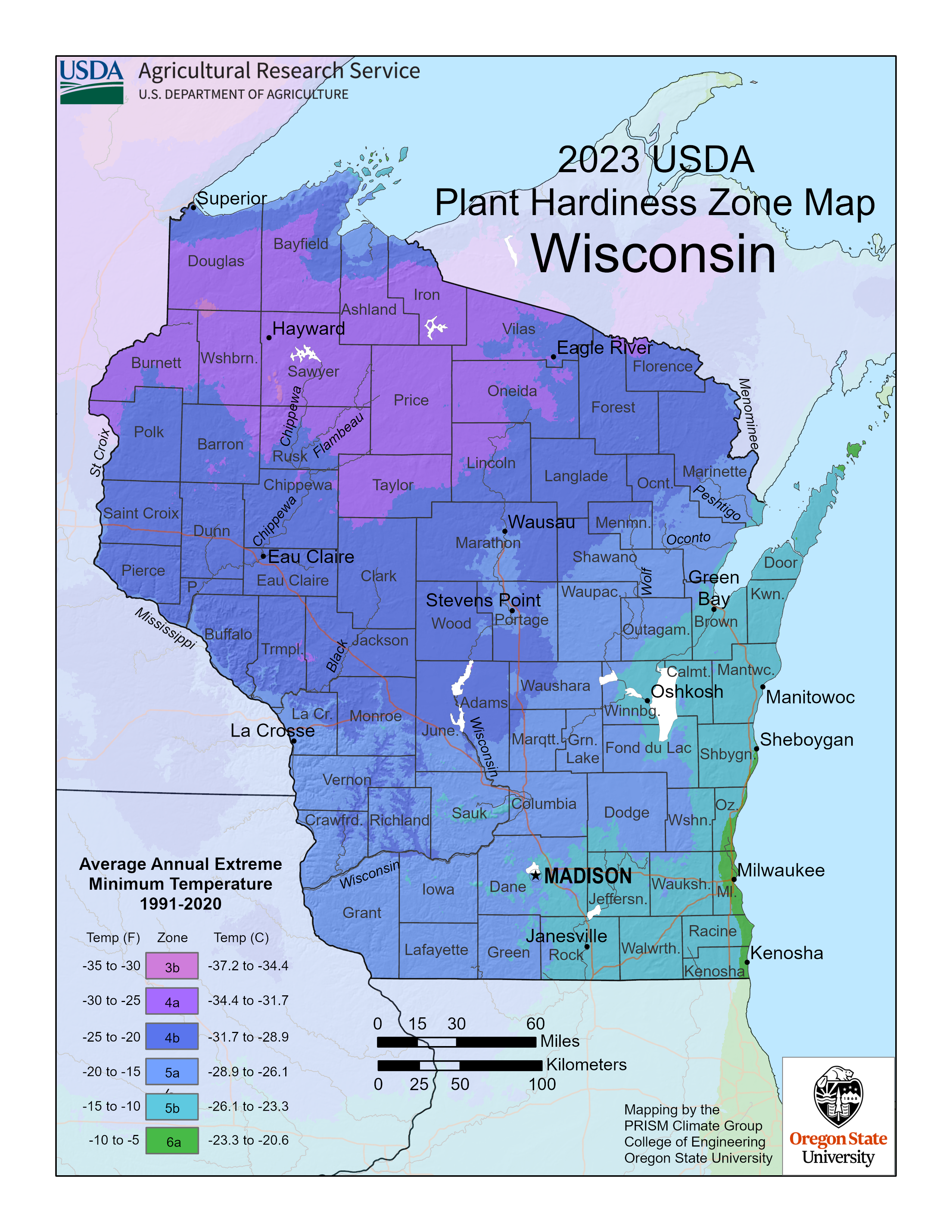Several areas around Wisconsin are now in new planting zones, as the U.S. Department of Agriculture has updated its plant hardiness map for the first time since 2012. The zones are used by gardeners for selecting what plants will be able to survive and thrive in a given location.
Despite the changes, experts say Wisconsin gardeners shouldn’t rush to make major changes to their plant selections, as the maps are based on average temperatures rather than extreme weather events.
The new map, which was released in November, is based on 30-year averages of the lowest annual winter temperatures, according to the USDA. It uses data collected from 13,412 weather stations around the country, compared to the previous map which used 7,983.
News with a little more humanity
WPR’s “Wisconsin Today” newsletter keeps you connected to the state you love without feeling overwhelmed. No paywall. No agenda. No corporate filter.
On the new map, the nation is divided into 13 zones that represent a 10-degree difference in average lowest temperature each winter. Those zones are subdivided into “a” and “b” sections, which represent 5-degree differences. The lower the zone number, the colder the average temperatures.
According to Lisa Johnson, a horticulture educator at Dane County Extension, not everywhere in the state was moved to a new zone. The regions that saw the most change are concentrated in the northwest part of the state and the area along the coast of Lake Michigan.
Wisconsin is now made up of zones 3b through 6a, with the warmest zone 6a being completely new to the state. It represents a small sliver of land stretching from Racine County to Sheboygan County and off the tip of Door County. Where zone 3 once represented a fairly large area in northern Wisconsin, it now only makes up two small patches in Douglas, Washburn and Sawyer counties.

Wisconsin isn’t alone — much of the country has experienced a “pretty significant change” in temperatures in recent years, Johnson said, with average temperatures rising upwards of 5 degrees.
Still, Johnson doesn’t recommend gardeners who find themselves in new zones make any major adjustments.
“I wouldn’t run out and get plants that grow in the next warmest zone and invest in a lot of those,” she said.
That’s because the maps are based on average temperatures, she said. Even as the weather gets warmer over time, Wisconsin still experiences plenty of extreme cold events each year, which can kill plants.
According to a paper by Laura Jull, an associate professor in the plant and agroecosystem sciences department at the University of Wisconsin-Madison, prolonged periods of warmer temperatures in the winter followed by rapid extreme drops can be particularly damaging to certain plants. And, she said the state is already experiencing this kind of warmer-than-usual weather during our winters.
“Midwestern apple, grape, cherry, peach, and other fruit crop growers are experiencing winter kill of their crops more often. For a plant that only flowers once per year, flower bud kill results in little, if any, fruit production and huge economic losses,” she wrote.
She also recommends some caution when it comes to introducing plants that are hardy to a new, warmer zone.
“Try a few new species in small numbers to see how they do, but I would not grow or order a lot of them,” her paper said.
She encourages buying plants from local sellers who are knowledgeable about Wisconsin weather rather than big box stores.
The USDA’s new plant hardiness map is available online, and you can find your zone by typing in your zip code.
Wisconsin Public Radio, © Copyright 2026, Board of Regents of the University of Wisconsin System and Wisconsin Educational Communications Board.

